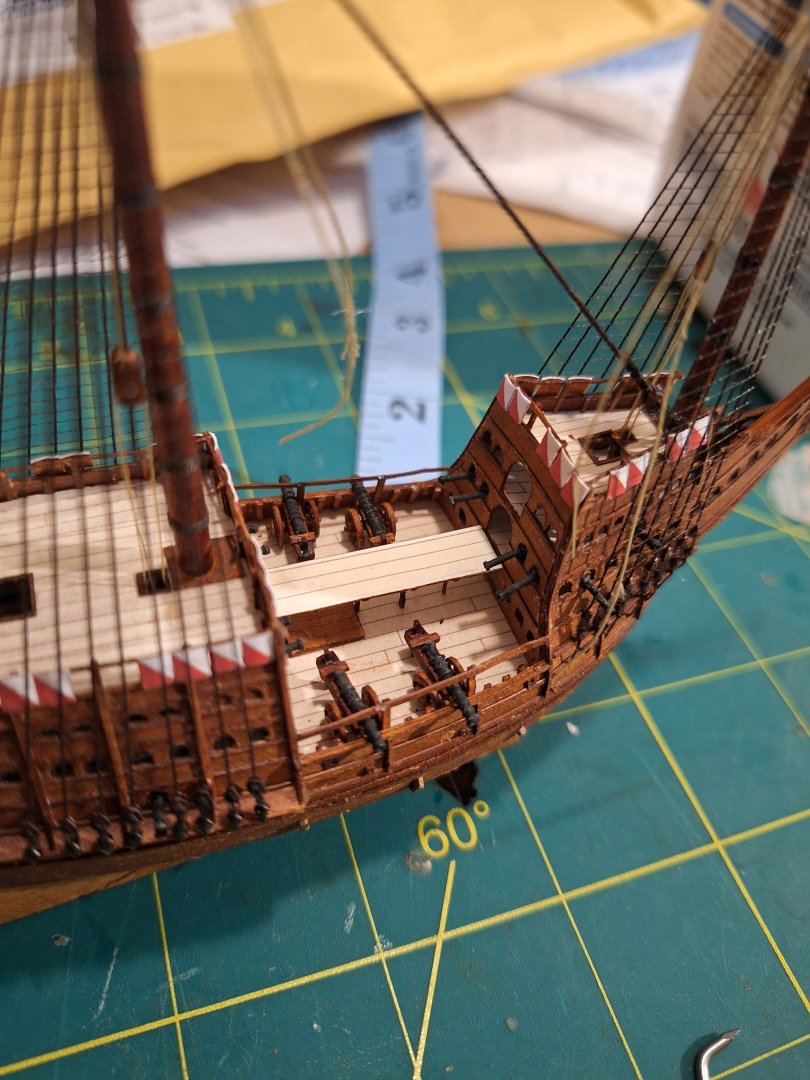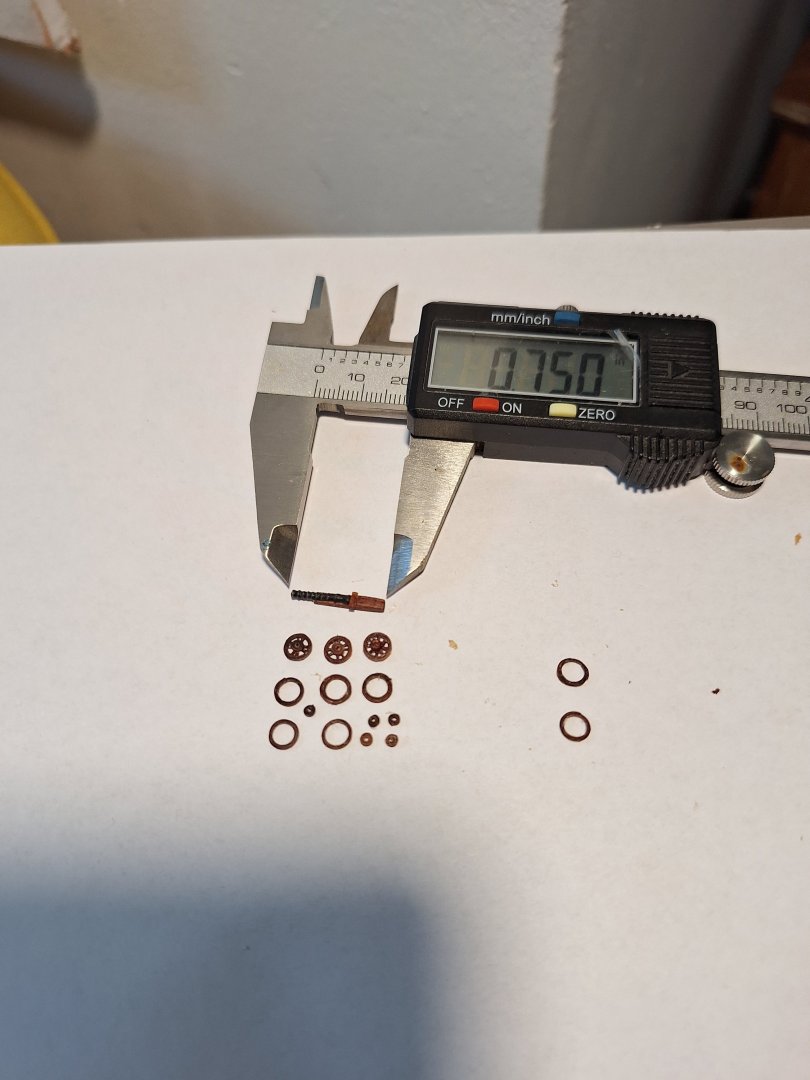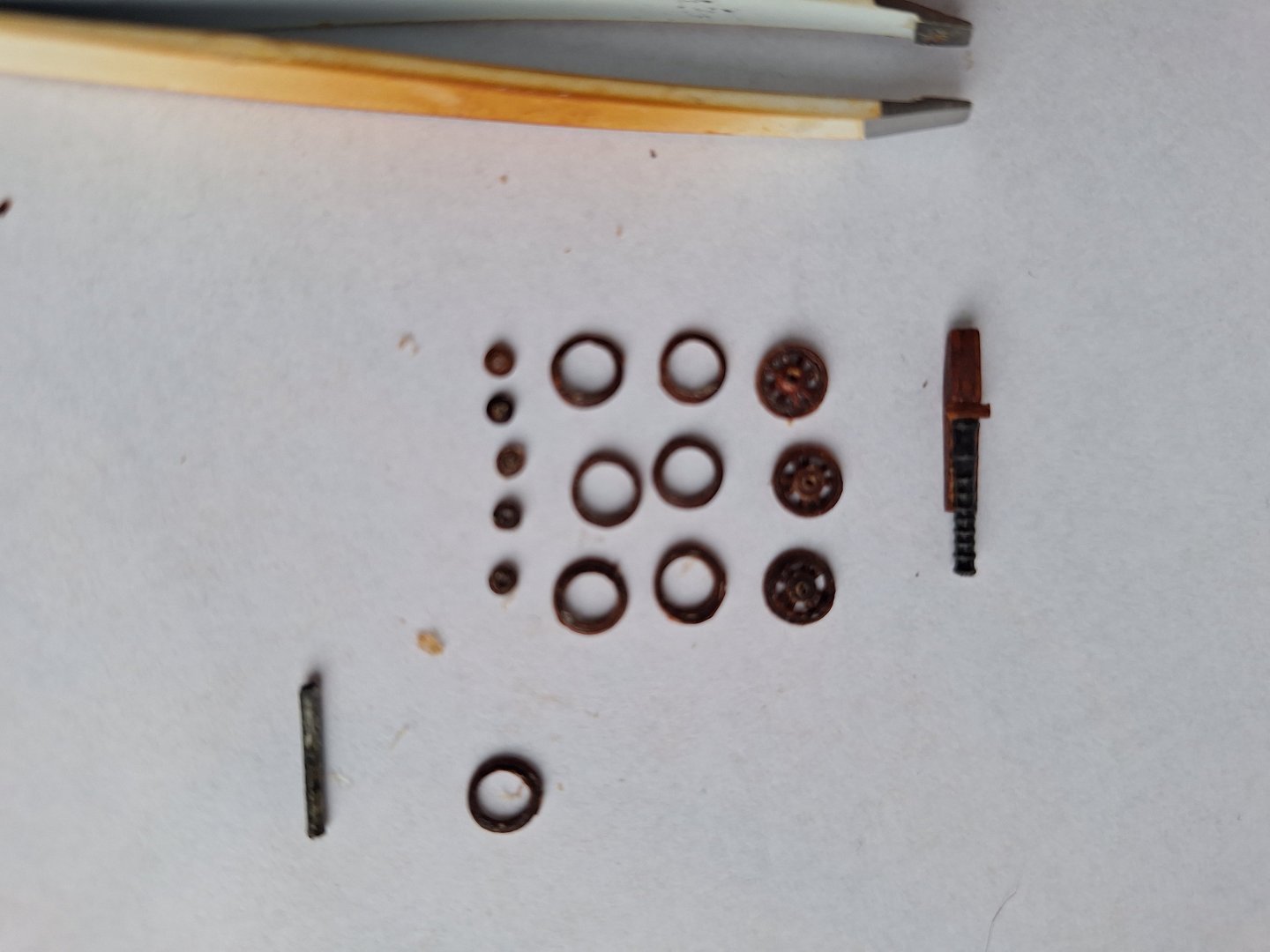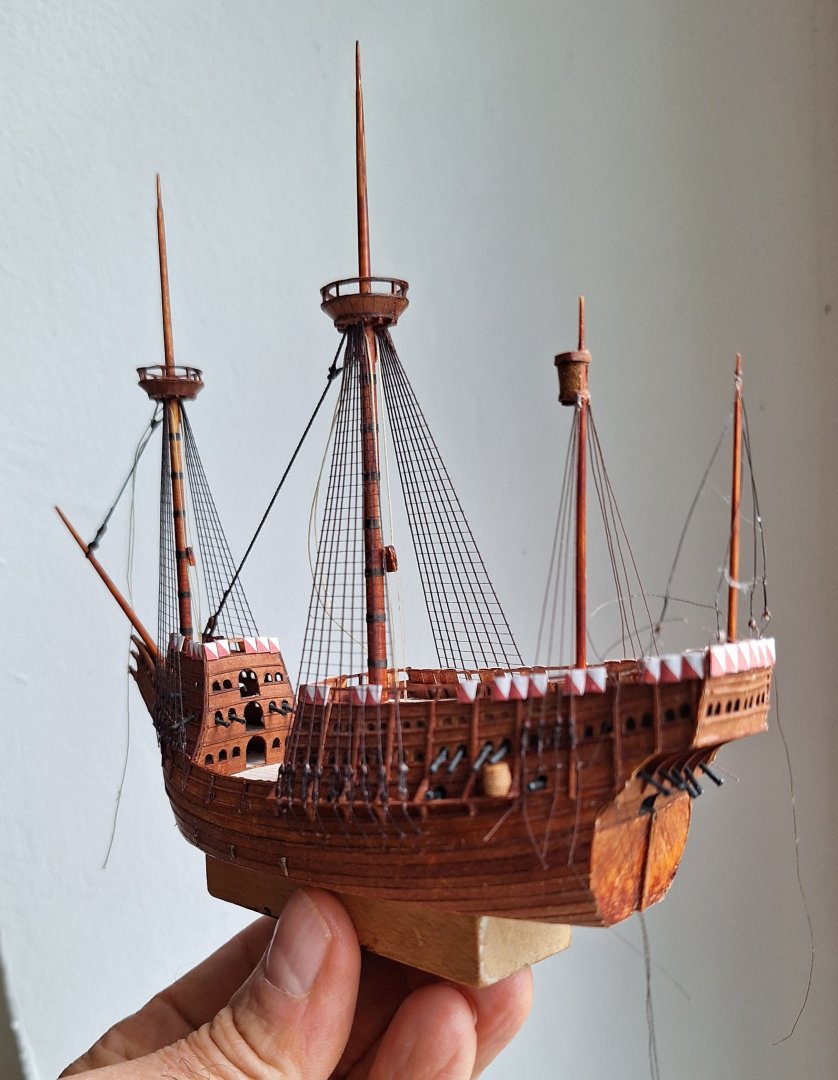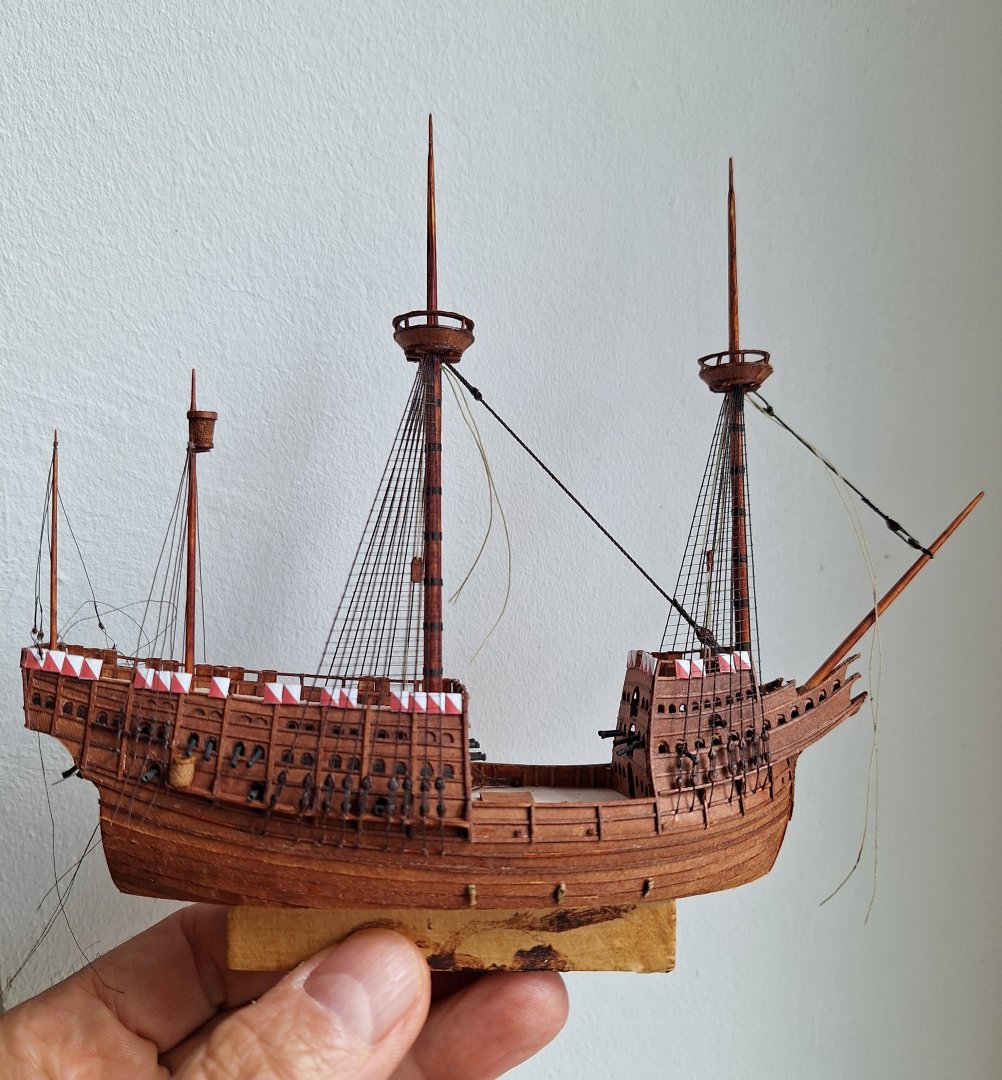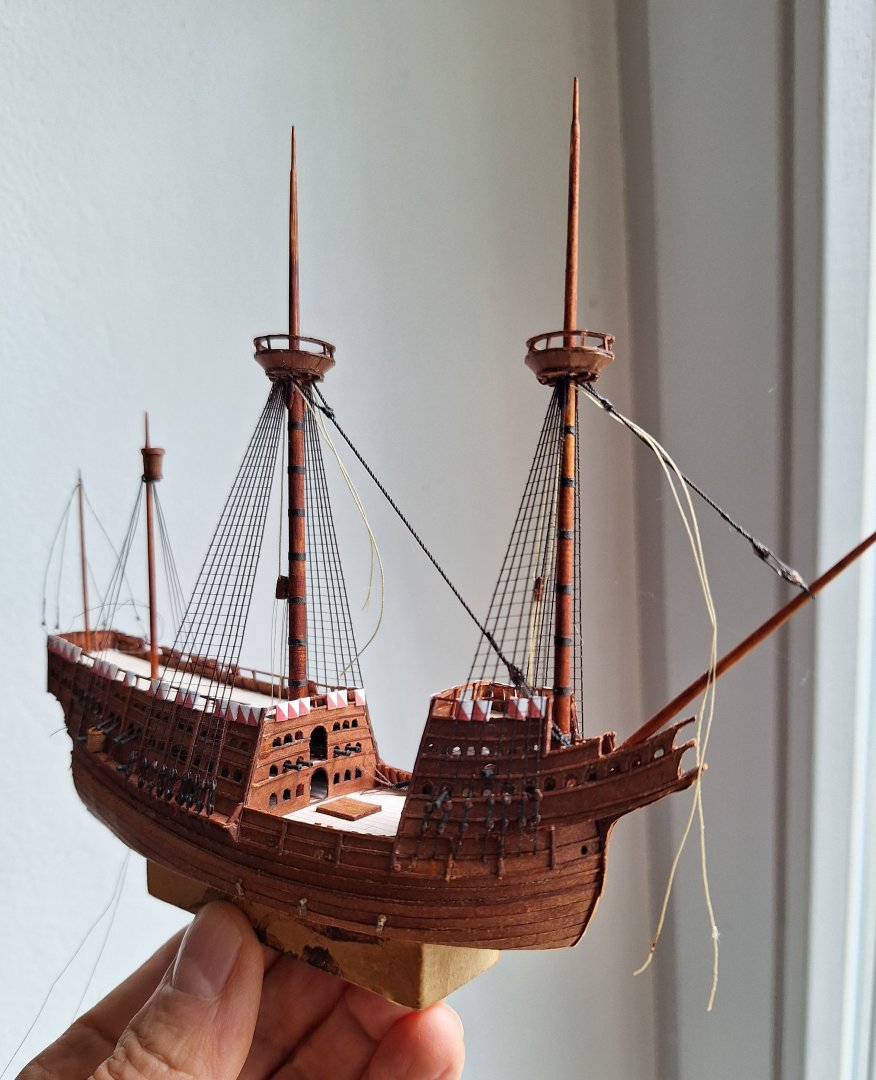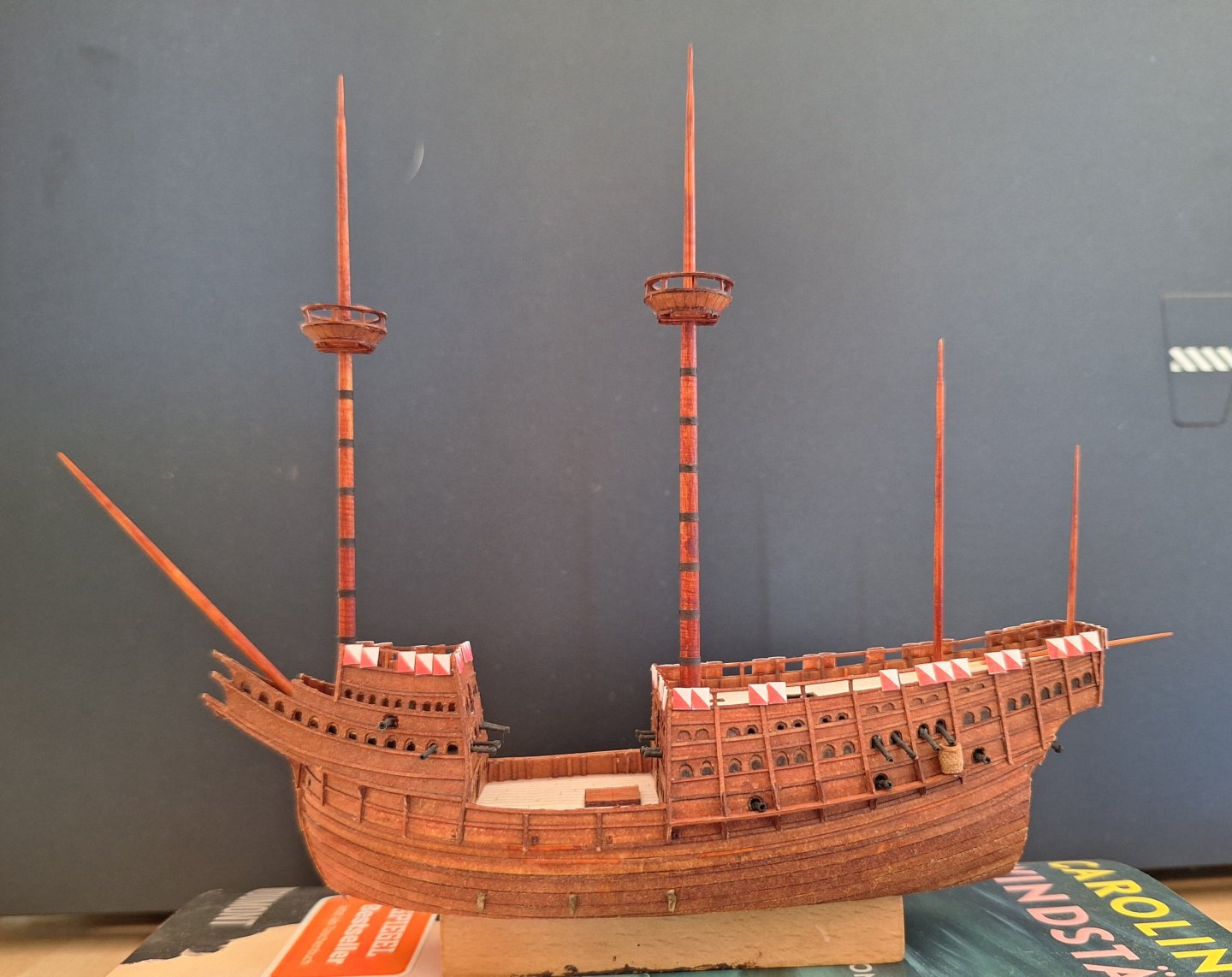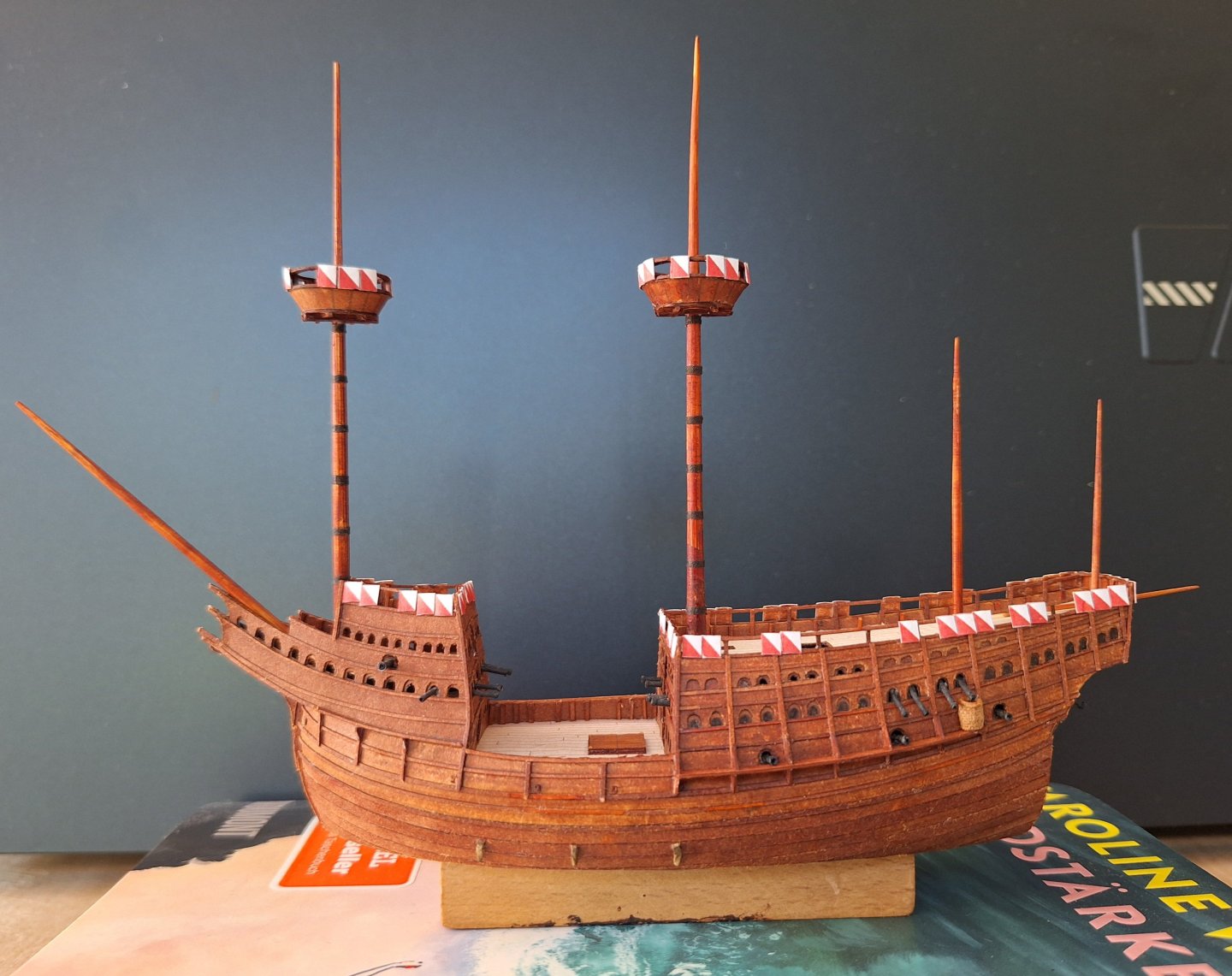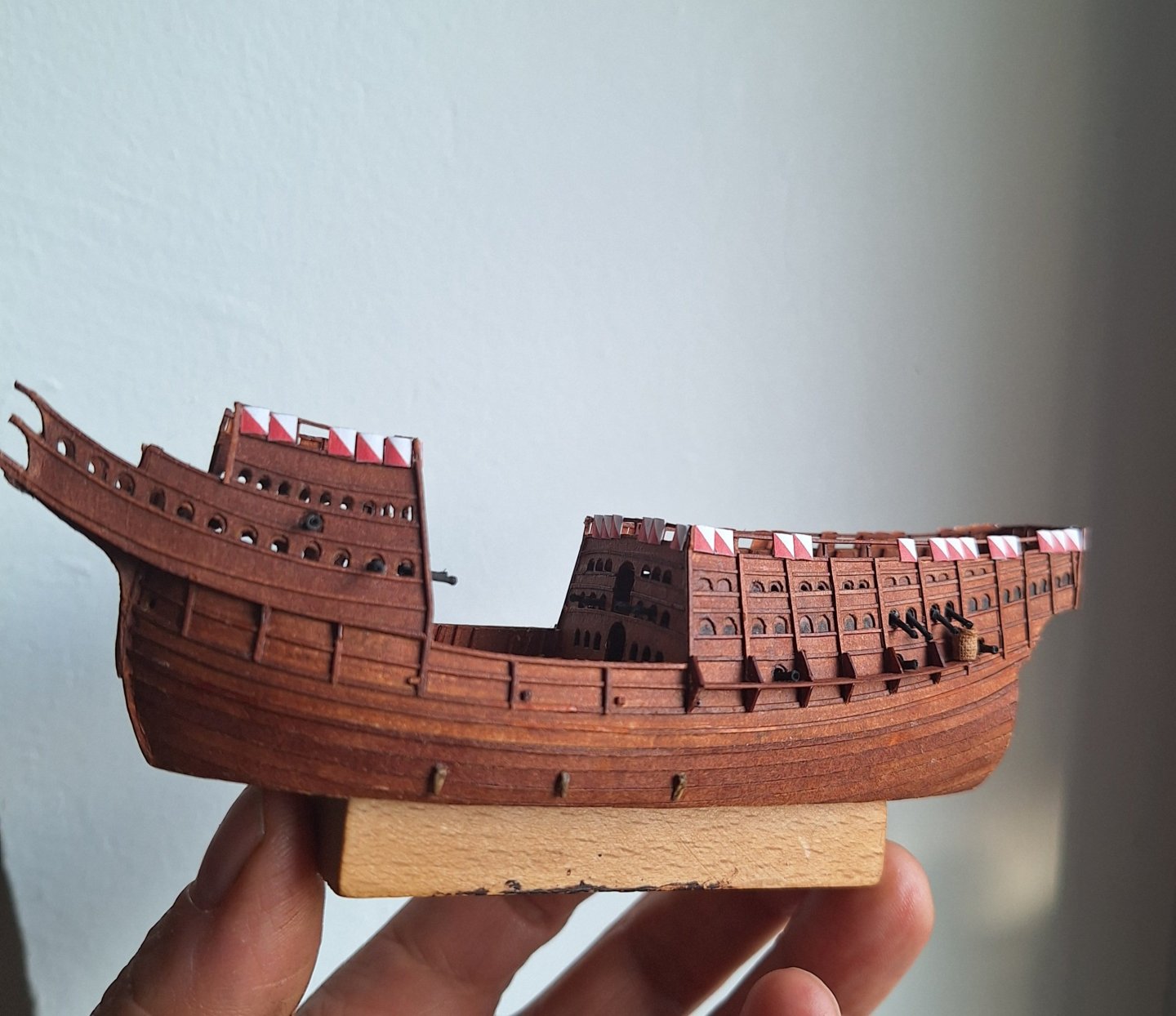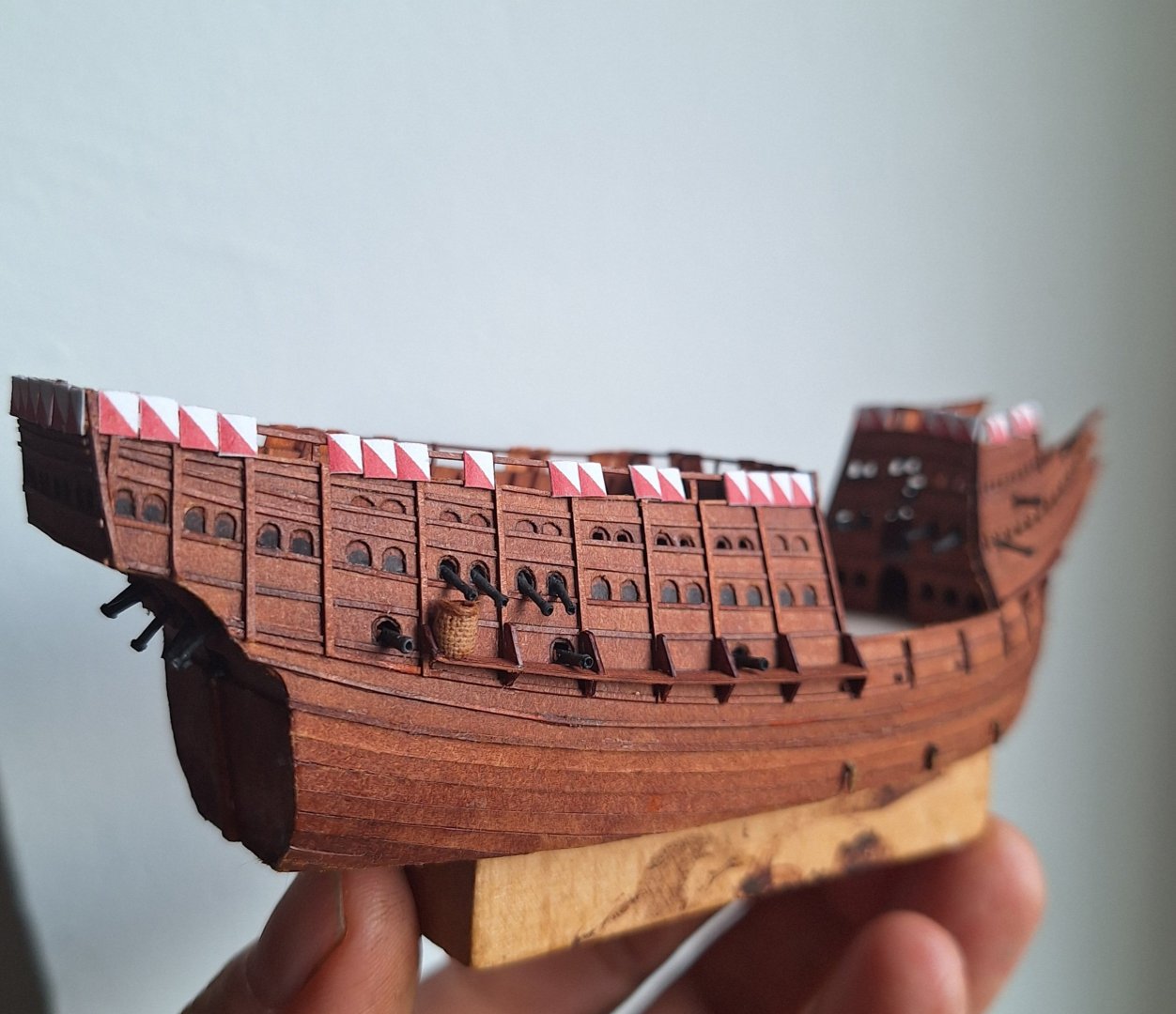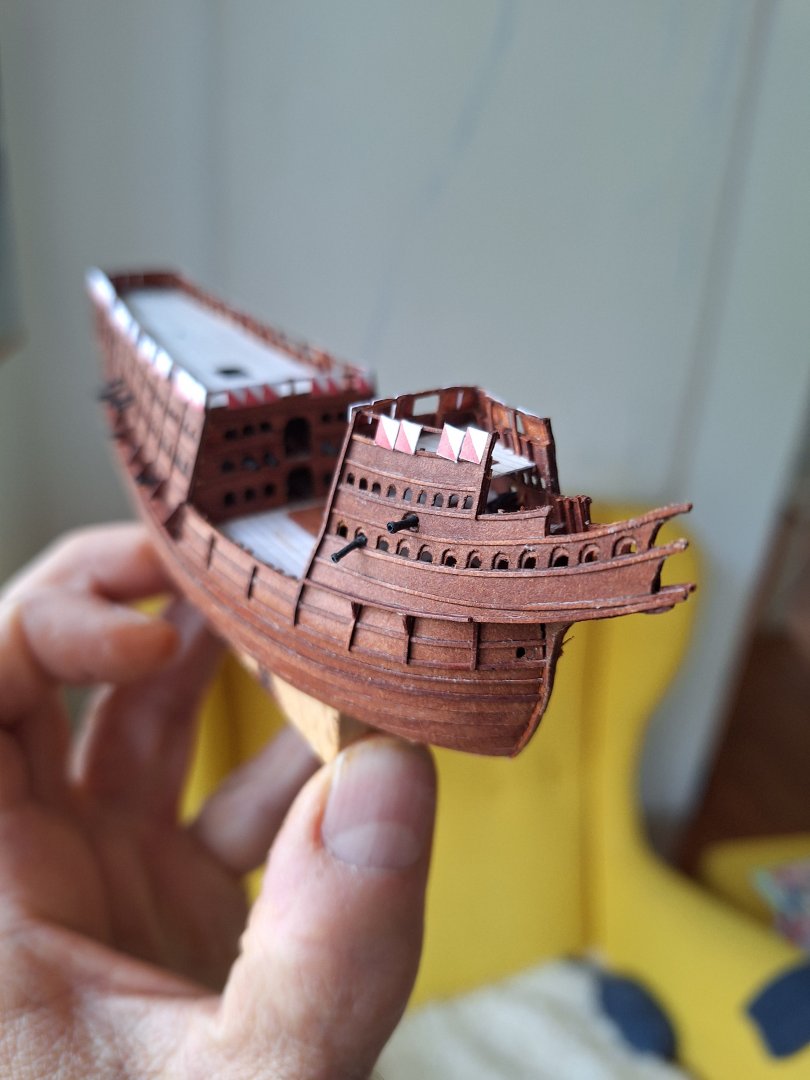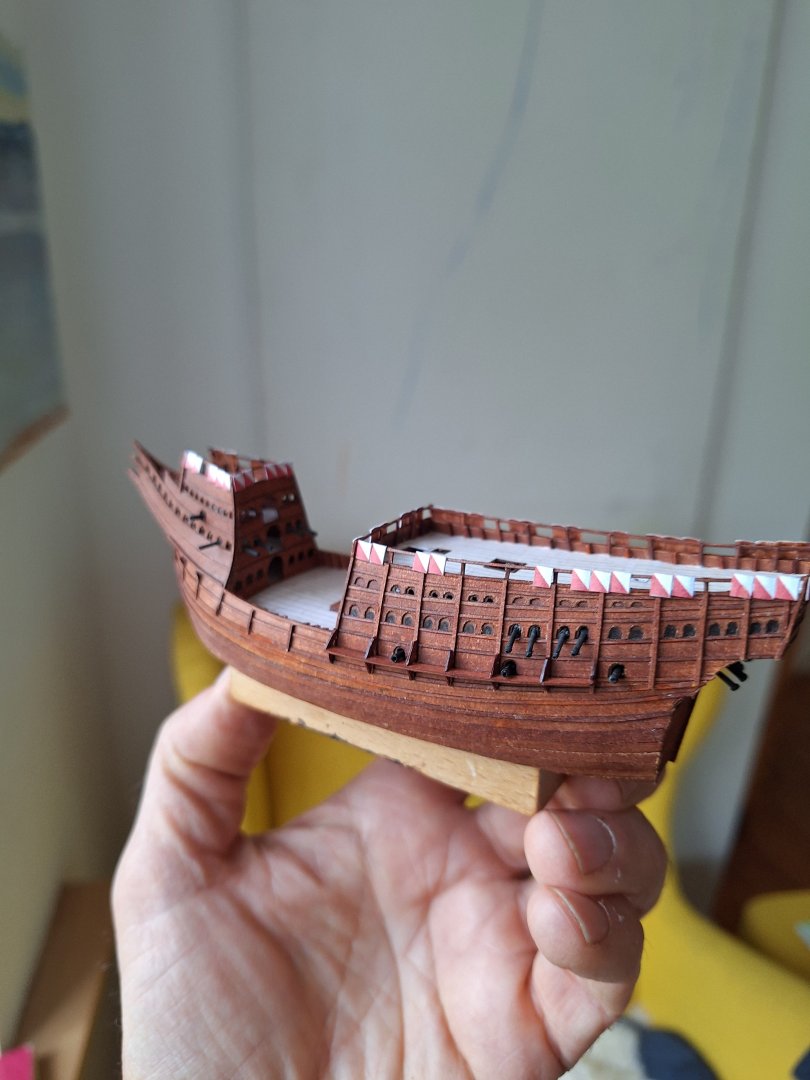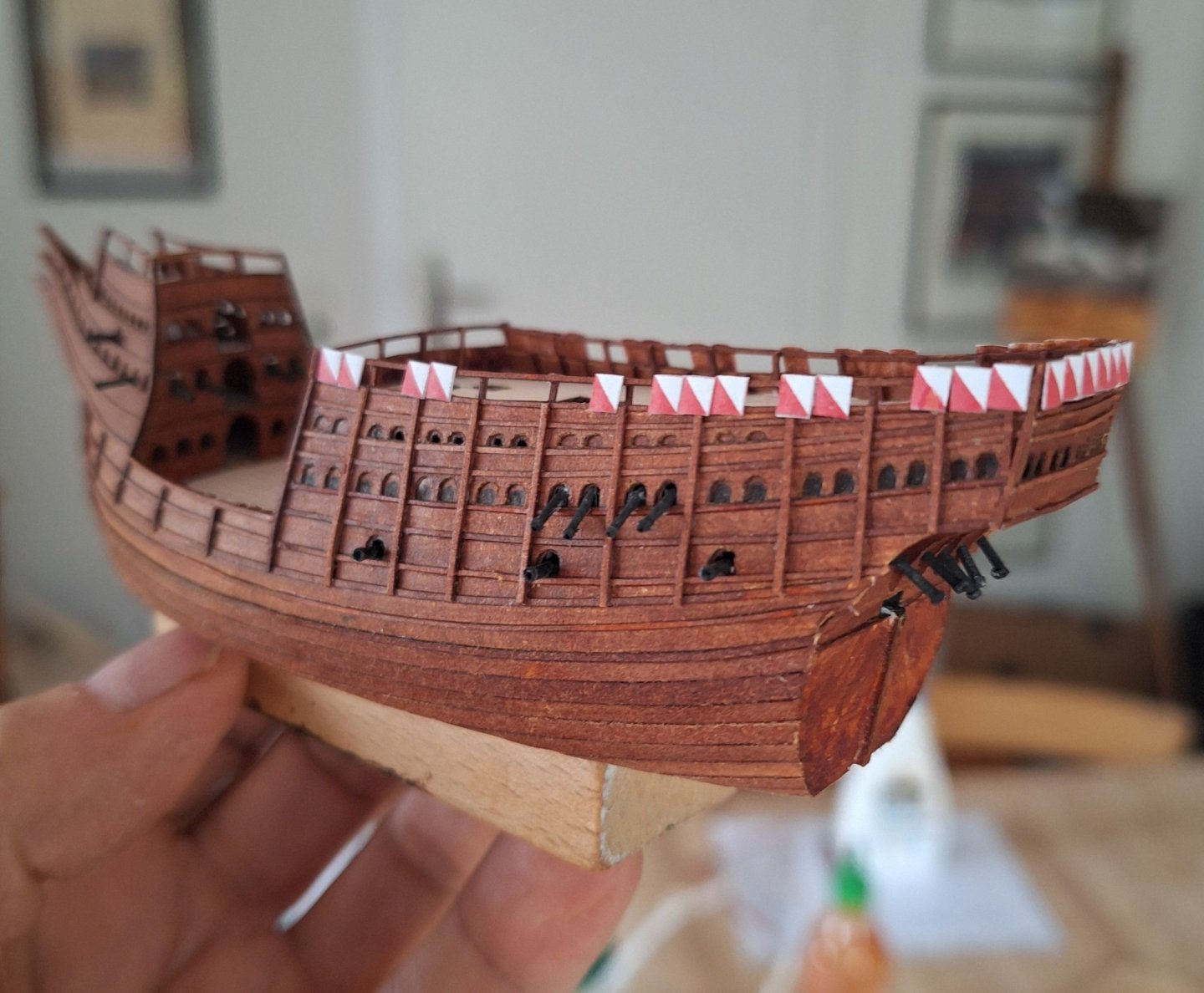
Alvb
Members-
Posts
136 -
Joined
-
Last visited
Content Type
Profiles
Forums
Gallery
Events
Everything posted by Alvb
-
It's been a while since I've shown anything here. I'm currently trying to make guns for the ship's deck. It's difficult. The gun shown has a total length of 1.8 cm, or 0.75 inches. The wheels have a diameter of around 5 mm, or 0.2 inches. I'm curious to see how much of it will still be visible under the anti-boarding nets. Alvb Unfortunately, the image is very poor....
-
many thanks to all I use these subframes made of sturdy cardboard. The shroud ropes are clamped into them, and then the web lines are placed over them. At the intersection points, I use a needle to apply tiny drops of shellac as glue. Finally, the entire shroud system is removed from the frame and any excess length is trimmed off. It's ready for installation on the boat.
-
Roter Löwe 1597 by Ondras71
Alvb replied to Ondras71's topic in - Build logs for subjects built 1501 - 1750
Don't the jib halyard's cable and the lower block of the mainstay get in each other's way? Bela -
This is better. The masts have been lengthened and the fighting tops have been reduced in size. I'd like to depict the sail as billowing as Brueghel did. I've used Bible paper for other models at this scale. However, it's difficult to curve it in two directions. Perhaps someone here has a tip on how I could create such a billowing, curved sail. best regards Alvb
-
Mary Rose 1511 — the epitome of the Northern tradition
Alvb replied to Waldemar's topic in Nautical/Naval History
Is there any evidence of what the hull and frame lines of older carracks looked like, around 1450 to 1470? And were there differences between English and Dutch carracks? -
Mary Rose 1511 — the epitome of the Northern tradition
Alvb replied to Waldemar's topic in Nautical/Naval History
@WaldemarThank you very much, basically its clear, but your drawings make it much easier to find the connecting arches. -
Mary Rose 1511 — the epitome of the Northern tradition
Alvb replied to Waldemar's topic in Nautical/Naval History
I meant the texts you and others have linked from time to time, not the posts in this forum. -
Mary Rose 1511 — the epitome of the Northern tradition
Alvb replied to Waldemar's topic in Nautical/Naval History
If only these texts were available in a precise German translation, how I would love to delve into them... -
The chainwales: No details are discernible in the Brueghel painting. Chainwales aren't even visible for the fore-shrouds. My interpretation: The main shrouds are attached to chainwales, while the fore-shrouds simply have their wales reinforced at the lower edges of the forecastle. Its bent side makes wide chainwales unnecessary. The shrouds still run freely from the side.
-
Mary Rose 1511 — the epitome of the Northern tradition
Alvb replied to Waldemar's topic in Nautical/Naval History
I'm currently building a small model from roughly this era. I realized that the bow area doesn't match the visual impression Brueghel creates in his depiction of "Icarus." The design presented here, with its strongly curved breadth sweeps in the bow, comes closer to that. Therefore, I've taken the liberty of applying the presented method to my design. Thanks to your clear description, it's easy to transfer. Only the reconciling sweeps—circular segments that connect tangentially to given arcs—should be easy to find using graphical methods, but no! Could you perhaps briefly explain to me how to find these sweeps? Thank you very much.
About us
Modelshipworld - Advancing Ship Modeling through Research
SSL Secured
Your security is important for us so this Website is SSL-Secured
NRG Mailing Address
Nautical Research Guild
237 South Lincoln Street
Westmont IL, 60559-1917
Model Ship World ® and the MSW logo are Registered Trademarks, and belong to the Nautical Research Guild (United States Patent and Trademark Office: No. 6,929,264 & No. 6,929,274, registered Dec. 20, 2022)
Helpful Links
About the NRG
If you enjoy building ship models that are historically accurate as well as beautiful, then The Nautical Research Guild (NRG) is just right for you.
The Guild is a non-profit educational organization whose mission is to “Advance Ship Modeling Through Research”. We provide support to our members in their efforts to raise the quality of their model ships.
The Nautical Research Guild has published our world-renowned quarterly magazine, The Nautical Research Journal, since 1955. The pages of the Journal are full of articles by accomplished ship modelers who show you how they create those exquisite details on their models, and by maritime historians who show you the correct details to build. The Journal is available in both print and digital editions. Go to the NRG web site (www.thenrg.org) to download a complimentary digital copy of the Journal. The NRG also publishes plan sets, books and compilations of back issues of the Journal and the former Ships in Scale and Model Ship Builder magazines.




